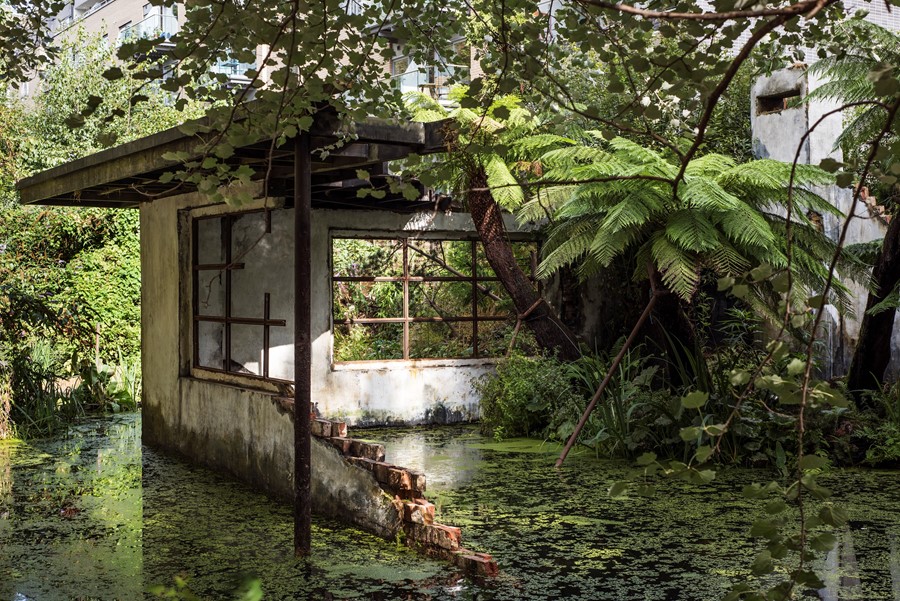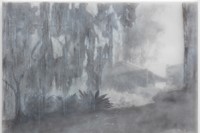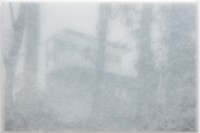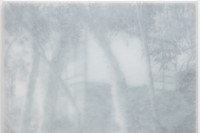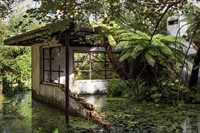For his enchanting new installation at London's Victoria Miro Gallery, opening this weekend, artist Alex Hartley has built what appears to be a dilapidated house in the middle of its waterside garden
In a garden facing onto, and somewhat consumed by, a basin of London’s Regent’s Canal sits the cavernous ruin of a modernist home. The ruin is, in fact, a fiction – one constructed by artist Alex Hartley for the exhibition After You Left at Victoria Miro’s east London gallery. Built to resemble European modernism’s International Style, and California’s later iterations of the tradition, A Gentle Collapsing II transforms the gallery’s waterside garden into a scene of thriving wild ferns and material decay.
A sort-of a folly, the piece performs as an homage to utopian ideals. It seems to have been vacated without explanation, and carries an atmosphere of activity – both in terms of the traces of its absent owner, and the growth of trees, moss and supposed mould around and within what remains. The walls were planned and built up according to Hartley’s impression of what the minimum requirement would be for the structure to be understood as a Modernist home. The open stairs, metal-grated horizontal window and cut section of low-hanging roof were shaped and finished – with painted on black mould – to give the impression of an accelerated process of ageing, and the accelerated progress of time.
A Gentle Collapsing II breaks boundaries between interior and exterior, public and private, natural and manmade, all of which are themes that continue in the interior spaces of the exhibition. “It’s the battle of architecture sinking back into nature that I find interesting”, says Hartley. “The work has already changed so much with the seasons, and when the leaves entirely fall it’ll have a much more direct relationship with the surrounding architecture. This is the second iteration of A Gentle Collapsing and they do take time, both in terms of considering what works in the space and how they adapt and grow once installed.”
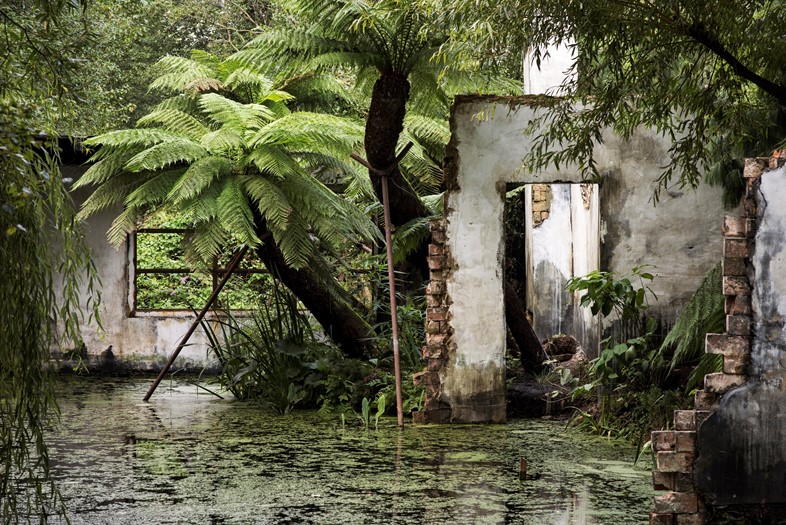
In contrast to the canal-side garden, indoors it is nature that feels more controlled, held within frames and drawn away from its surrounding architecture. “If there’s one thing that has run through my work all along it’s the idea of boundaries, and where they lie. When I lived in Los Angeles I’d go to see modernist houses, but because of the relationship between the garden and the building – with the outside space being treated like another room – the boundaries would always be heavily defended. I’d end up crawling through foliage and up to fences to photograph the buildings through a hedge. In the wall-based works I’m showing I’ve tried to draw out the idea of the balance between nature and architecture shifting in favour of nature. The glass-walled pavilions slip back into either the wild, or their controlled versions of it.”
The subject of utopia, and the juxtaposing back and forward-facing focus intrinsic to its study, is one that has long interested Hartley: “The 1960s and 70s was the last time we had a clear utopic vision. Maybe with what we’re pushing against now a movement will build up, but there doesn’t seem to have been the energy for it.” He describes After You Left as having “a nostalgic romance” to it: “But it’s not entirely without optimism for our time. I have a definite sense of ‘this moment can come again’. We’re still searching for the form it’ll take, and the impetus to make it happen; but it’s in periods of disenfranchisement that people coalesce and you start to get an idea of what’s possible.”
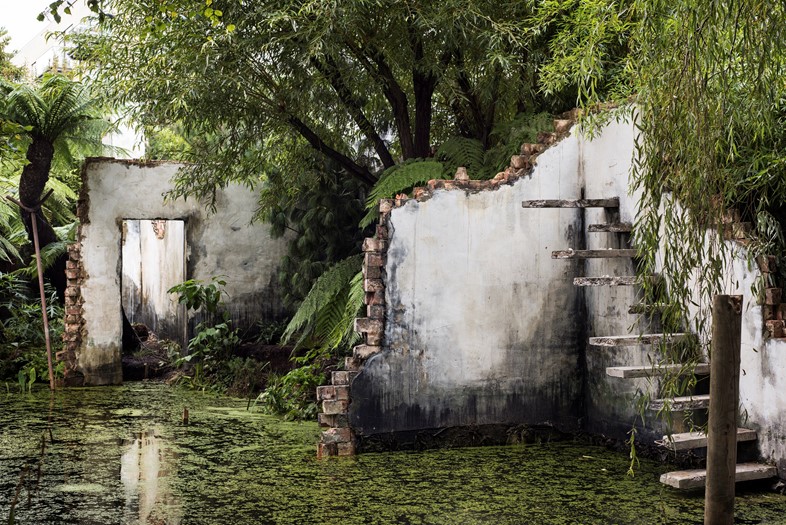
Alex Hartley: After You Left is at Victoria Miro Gallery from November 19 until December 16, 2016.
